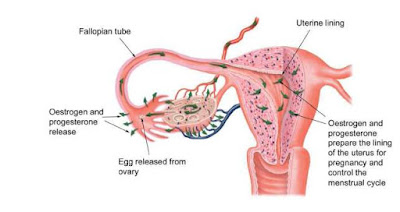Biology concepts – neuroendocrine, ovary, bilateral asymmetry, internal asymmetry, absence asymmetry, hormones, ovulation
| Image may be NSFW. Clik here to view.  |
Many things we are taught in school just aren’t so. The Salem witch trials, for example, did not result in women being burned at the stake. Sure, some were imprisoned and a couple dozen were hanged, but none burned at the stake. |
Engineering professors and even physicists at university will teach you that glass is an amorphous liquid. The reason that windows in extremely old buildings are thicker at the bottom is because the glass has had time to flow. Nope.
Glass doesn’t have a crystalline lattice when solid, but it doesn’t flow. The reason old windows are thicker at the bottom is because they used to make glass panes by pouring molten glass on a wheel and spinning it. The force would spread it out, but it would be thicker on the outside edges. When the panels were cut for panes, they installed the thick side at the bottom for stability. So there.
Finally, there were 13 original American colonies… or maybe not. Delaware was swapped back and forth between Maryland and Pennsylvania. Delaware didn’t come into existence as its own colony until the Revolutionary War. It was known as the ”Three Lower Counties” from 1664 until 1776 and shared a governor with Pennsylvania for the last 75 years of its existence.
Speaking of things that just aren't so, there are couple of things in the neuroendocrine system that most people think they know. There are asymmetries in every part of the endocrine system, ant the others are no exception to having exceptions.
| Image may be NSFW. Clik here to view.  |
The ovary produces hormones and releases ova. Notice that the oviduct (fallopian tube) doesn’t connect directly to the ovary. When the egg is ready to be released, the estrogen and progesterone cause the fimbria at the near end of the oviduct to swell and come closer to the ovary. When the egg is released, the cilia on the fimbriae cells sweep it into the oviduct. |
The ovaries are paired organs like the testes of males, but not all animals have two functioning ovaries. In the Greater Horseshoe Bat (Rhinolophus ferrumequinum), there is only one functioning ovary, the right one, and it's 3-4x the size of the non-functional left ovary. On the other hand, the Natal Clinging Bat bat (Miniopterus natalensis) has only a left functioning ovary and it is several times the size of the non-functional right ovary.
Single ovary examples also exist in the primitive fishes. Lampreys have only one ovary as result of fusion of the two gonadal primordial into a single functioning gland. Hagfishes have a single ovary simply because the other one doesn’t develop.
Interestingly, sometimes it’s the right that doesn’t develop and sometimes it’s the left. On the other hand, sharks start out with two ovaries, but the left one atrophies over time, leaving one ovary but two oviducts.
| Image may be NSFW. Clik here to view.  |
The hagfish is a primitive fish. The females only have one ovary, but that isn’t the weirdest part. They produce proteins and mucins that mix with water and form a slime when they are disturbed. The filaments are 100x thinner than hairs, but 10x stronger than nylon, so they are a subject of much research. |
Many birds have one ovary – almost always the left one. A study from 2013 made use of very rare early bird fossils that preserved the ovary tissue; preservation of soft tissue elements is indeed rare. They found that these early fliers had already donated one ovary to the cause of flying. The hypothesis is that dinosaurs laid many eggs because they had two ovaries, but early birds sacrificed an ovary to reduce weight and make it easier to fly.
The survival advantage afforded by flight offset the disadvantage of fewer eggs, so it was basically a reproductive no harm, no foul. These basal birds had already moved away from the reproductive mechanisms of dinosaurs and present crocodilians toward more bird-like strategies. What this doesn’t explain is why many raptors – like hawks and eagles, have two functioning ovaries. A 2014 paper showed that the right ovaries were functional and capable of responding to, and producing, estrogen and progesterone.
Some birds of prey have two ovaries and some have one. In some, the two are both functional and in others the right is vestigial. This makes me wonder about the evolution of birds. Did the loss of an ovary occur independently several times in different lineages? Or did it occur once in the progenitor of all birds, but some of the descendants evolved the second on again?
| Image may be NSFW. Clik here to view.  |
The mountain viscacha is a rodent, but looks like a cross between a rabbit and a chinchilla. They have short forelegs and long fluffy tail to go along with the rabbit-like ears. They live in dry places, so they almost never drink. They get all their water from the plants they eat. |
The mountain viscacha (Lagidium viscacia) is a rodent that lives in the rocky, high altitude, mountainous regions of South America. It starts out with two functional ovaries, but about the time of their first breeding season, the right ovary overgrows, the left shrinks a bit; only the right becomes functional. The exception in this exceptional animal is that if the right ovary is injured or diseased, the left will grow and take over its functions. This doesn’t occur in our other examples.
Similar to testes, there is also a functional asymmetry in ovaries, and this is where we get into the major fallacy that people are taught about the female reproductive system. We are taught that ovaries are good sharers, they take turns ovulating, right-left-right-left, one each month. No……it just ain’t so.
They can take turns, but they usually don’t. And women who want to have children should be glad that they don’t split the load equally. For humans (women mostly), there is slightly less than 50% chance that the opposite ovary will release an egg in the next cycle, according to a 2000 study. This means that side of ovulation is basically random for any given month, but this doesn’t mean that every ovulation has an equal chance of producing an embryo.
| Image may be NSFW. Clik here to view.  |
Notice that after ovulation, the fertilization of the egg takes place in the oviduct, not the uterus. The embryo already has 32-128 cells by the time it hits the uterine wall. This is why it is important for the ovary to be producing estrogen and progesterone the whole time. The uterus must be made ready for the incoming embryo. |
However, it isn’t just a right-sided ovulation that produces the best odds of pregnancy; the series of previous ovulations matters as well. If you were to monitor which ovary ovulated over three cycles, there would be eight possible sequences: left-left-left, left-left-right, etc. all the way to right-right-right. This is exactly what a 2011 study tracked, along with pregnancy rates.
The researchers found that the pattern most likely to produce a pregnancy was left-left-right. These results would need to be repeated several times, especially since significant results are difficult to assess when there are eight variables, but their numbers were very convincing. So asymmetry in the function of the ovaries can have a very real affect on hormone levels and pregnancy rates.
Ovulation of a single follicle might be a 50/50 shot each month, but over time the right side of the reproductive system in women seems to be dominant. If the follicles were counted in each ovary (sort of a permanent record of ovulations) of a woman late in her reproductive years, about 62% of them will be on the right side.
Likewise, progesterone and estrogen blood levels are higher during a right-sided ovulation cycle. This data, along with the pregnancy data, indicate the female reproductive system is really right-side dominated. Why is the right side dominant?
| Image may be NSFW. Clik here to view.  |
The top image shows the corpus luteum that develops from the follicle that released the egg. This is a huge source of hormones. It also shows the follicle atresia, where primary follicles degenerate before releasing eggs. The bottom image is the timetable of the happenings in the ovary. Notice that the degenerating corpus luteum is still bigger than the primary follicle, so over time, the ovary does get bigger. Then as she gets close to menopause, they get smaller. |
If the blood moves out slower, then the corpus luteum (the leftover follicle of ovulated egg) stays around longer, and this makes it less likely that the left ovary will be ready to ovulate again the following month. Over time, the right will have more follicles from ovulations. The hormone levels would also be higher if carried out of the ovary faster, so this is probably why plasma hormone levels are higher after a right-sided ovulation.
The right side dominance is likely to switch to the left side later in a woman’s reproductive years because of the relatively lower numbers of ova left on the right side. This may be why it is less likely that a woman will become pregnant in her later years.
In most mammals, right and left ovaries are about the same size (given the exceptions of mountain viscacha and waterbuck we talked about above). But in humans, this is merely how they start out. Later in the reproductive years, there is often an acquired size asymmetry.
| Image may be NSFW. Clik here to view.  |
A dichotic listening test is for attention and picking out one noise precisely. Most people have a right ear advantage (REA) for speech because the speech centers are on the left side of the brain. Research shows that women have a reduced REA compared to men and it is affected strongly by estrogen and progesterone (2011). This may be so that they will focus in less on one sound and might then be able to pick up on distress from their baby. |
Over time, the number of follicles increases and the size of the ovary increases. More right-sided ovulations (since the right side drains faster and therefore means it can be ready to ovulate again the next month) means that it enlarges more than the left, and a size asymmetry develops.
Hormones, number of ovulations, pregnancy rate – there isn’t anything about the ovaries that isn’t asymmetric – and yet people are taught that they have a symmetric size and function. Right-left-right-left.... yeah sure.
Next week, asymmetries abound in the human body, but they're usually a little here a little there. But what if every organ in you body turned out to be on the wrong side?
For more information or classroom activities, see
Not too many classroom activities for ovaries and hormones. Sorry. Although I am impressed by the idea of using a pomegranate as a model for the human ovary.